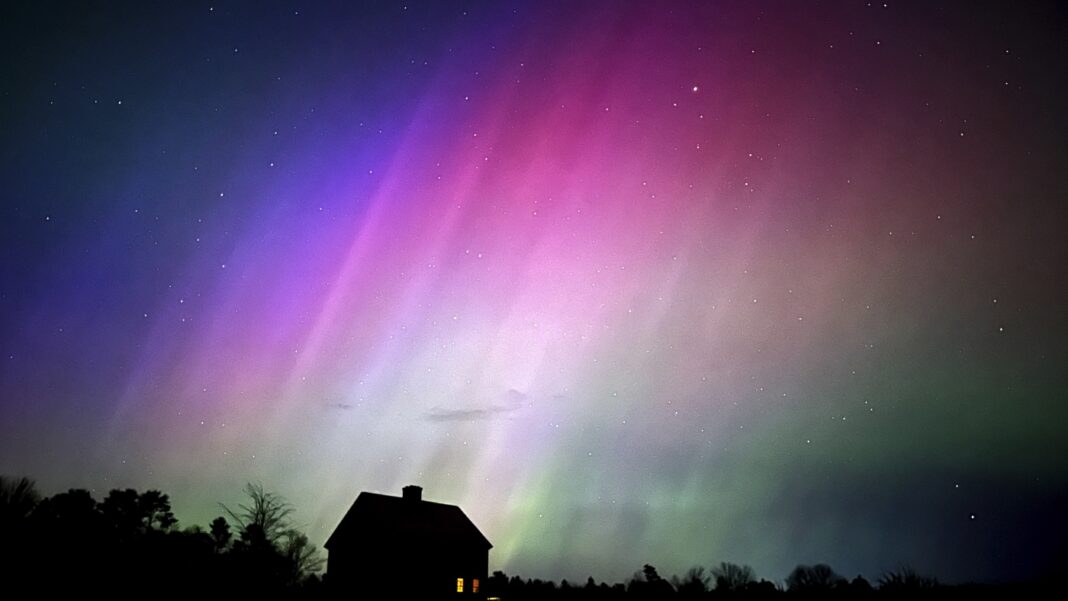
The northern lights flare in the sky over a farmhouse on May 10, 2024, in Brunswick, Maine.
Robert F. Bukaty/AP
hide caption
toggle caption
Robert F. Bukaty/AP
Fireworks may not be the only thing lighting up the skies as the clock strikes midnight ringing in the new year.
The northern lights, also known as aurora borealis, are forecast to be visible across parts of North America starting Tuesday night, according to the National Oceanic and Atmospheric Administration’s Space Weather Prediction Center.
A pair of coronal mass ejections — bursts of magnetic field and plasma from the sun’s outer atmosphere — are expected to reach Earth Tuesday and create a strong geomagnetic storm across the Northern Hemisphere, potentially giving many Americans a stunning view as they celebrate the new year.
“The aurora may become visible over many parts of the northern states and some of the lower Midwest to Oregon,” NOAA says.
Northern lights are usually visible in North polar regions, but because the sun’s current solar cycle has reached its max and produced major solar storms, the luminous bands of color have been visible this year in parts of the U.S. that normally would not see them.
“The Sun has an eleven year activity cycle, where frequency of activity (solar flares, coronal mass ejections) rises and falls. The year 2024 was the peak of our current solar cycle, marked by several solar storms which impacted the Earth,” Lisa Upton, lead scientist at the Southwest Research Institute in Boulder, Color., tells NPR. Upton is also co-chair of NOAA and NASA’s Solar Cycle 25 Prediction Panel.
In May, people in states as far south as Alabama were treated to the celestial show. In general, fall and spring are the best seasons for looking for northern lights in the U.S., according to NOAA.
Now, if the coronal mass ejection or CME arrives Tuesday afternoon and is strong enough, the evening will be “promising for aurora development,” Shawn Dahl, a space weather forecaster at NOAA’s Space Weather Prediction Center, tells NPR.
Dahl says Tuesday night and possibly Wednesday night are the best windows of opportunity to spot auroras.
And since it is a new moon — its invisible phase when the side of the moon facing the Earth is not illuminated — chances of seeing the aurora in anticipated areas will be greater.
Nonetheless, seeing an aurora is a “game of chance” and sky watchers should be patient, NASA says.
For the best chances of seeing the aurora, go outside at night away from city lights and look to the north, NOAA advises.
The best aurora can usually be seen between 10 p.m. and 2 a.m. though it also can be seen in the morning and in the evening, the agency says.
Northern lights can be seen with the unaided eye. To snap a good photo of the aurora on your cell phone, use “night mode,” the agency says. You can also adjust the ISO and exposure settings or use an app that can help with your camera settings.
Skygazers can track the timing and location of the aurora on aurora forecast apps and NOAA’s website.




